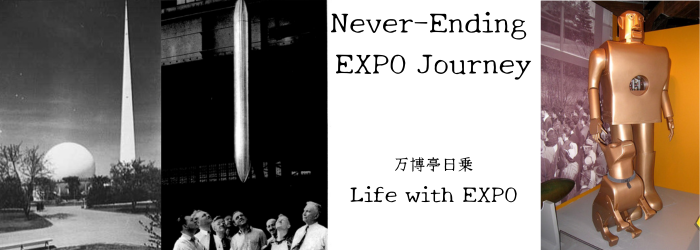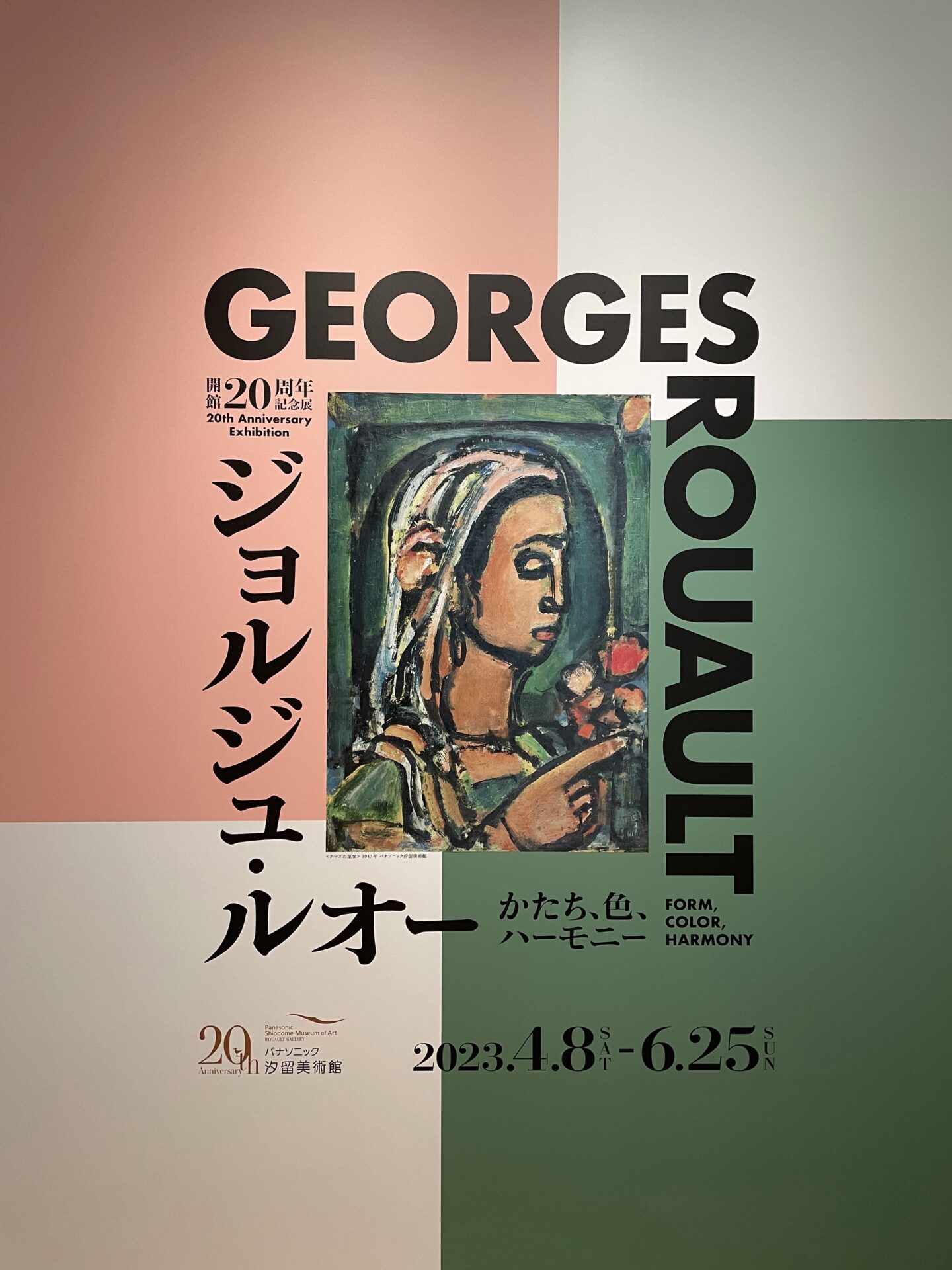I went to the “Georges Rouault – Form, Color, Harmony” exhibition at the Panasonic Shiodome Museum of Art.
This exhibition is being held to commemorate the museum’s 20th anniversary.
George Rouault:
Form, Color, Harmony
April 8 (Sat) – June 25 (Sun), 2023
Venue: Panasonic Shiodome Museum
Organizer: Panasonic Shiodome Museum, NHK, NHK Promotions
Supported by: Embassy of France in Japan/Institut Français Japan, Minato Ward Board of Education
Cooperation: Japan Airlines
Special cooperation: Georges Rouault Foundation
The Panasonic Shiodome Museum of Art is famous for its collection of works by the French painter Georges Rouault (1871-1958).
It’s website says;
” We have Paintings from early to late years by Georges Rouault (1871-1958), one of France’s leading 20th century painters, and his representative Prints such as “Miserere”, “Circus of the Shooting Star”, and ”Flowers of Evil”. We have a total of about 260 items of Rouault.
Rouault’s masterpieces from his early years to his later years are constantly on display at the Rouault Gallery in the museum. ”
Indeed, it is a considerable collection to have 260 works of Rouault.
Perhaps it was only natural that Rouault was chosen as the theme for this exhibition commemorating the 20th anniversary of the museum’s opening.
In this exhibition, in addition to the collection of the Panasonic Shiodome Museum, works from the Georges Rouault Foundation, the Center Pombidou, National Museum of Modern Art in Paris, etc. are included, making it an impressive exhibition.
Speaking of Rouault, in addition to works in the style that everyone imagines, he also painted paintings inspired by Gustave Moreau who was a teacher, Rembrandt van Rijn, Nicolas Poussin, Antoine Watteau, Camille Corot, and even Paul Cézanne and Henri Matisse. Some of which are displayed in this exhibition.
Rouault and the Paris Exposition of 1900
A paper titled “From Moreau to Cézanne: Two Models of Georges Rouault” by Angela Lamp (Modern Art Collection Curator, Center Pompidou, Paris/National Museum of Modern Art) is included in the catalog of this exhibition. In this paper, the subheading “Paul Cézanne” reads, “It is true that Rouault felt close to Cézanne, the master of Aix-en-Provence. But already in 1900, at the Paris Universal Exposition, he saw Cézanne’s oil paintings…”
Rouault saw Cézanne’s oil paintings at the 1900 Paris Exposition.
What kind of work was Cézanne’s work exhibited at the Expo at that time?
I’ve done a lot of research, but all I know so far is that Cézanne submitted three paintings, still life and landscape. I know that at the 1889 Paris Exposition, he exhibited one piece, “The House of the Hanged,” but I would like to take the time to examine these three pieces.
By the way, Rouault himself exhibited his works at the 1900 Paris Exposition. He is still only about 29 years old, so it can be said that he was allowed to exhibit at the Expo at a fairly young age.
According to the chronology compiled by Karua Tsunoda, which is included in the back of the exhibition catalog for this exhibition, in 1900, at the age of 29, he ‘Received a bronze medal at the Paris Universal Expo’s Art Exhibition held at the Grand Palais for “Child Jesus Among the Scholars (L’Enfant Jésus parmi les Docteurs)”’.
It can be said that it is a big deal to suddenly get a bronze medal in such a prestigious exhibition as World Expo’s Art Exhibition. Rouault was also a winner of the Exposition award.
As a matter of fact, when I looked into a certain French document that I have treasured at the Banpakutei, I found that in addition to this “L’Enfant Jésus parmi les Docteurs“, Rouault was approved for exhibiting another work. A total of 2 items have been exhibited. The other work was “Christ et disciples d’Emmaüs“.
If you search on the internet, you can see both pictures, so if you are interested, please check it out.
This is my impression from untrained eyes, but the bronze medal winner, “L’Enfant Jésus parmi les Docteurs”, is heavily influenced by Moreau, while “Christ et disciples d’Emmaüs” is a work that has the style of Rouault we know.
By the way, ” Emmaüs ” is the name of the place, and it means the city 11 km away from Jerusalem where the resurrected Jesus Christ appeared.
In this chronology of the catalog, the descriptions of Rouault and the World Exposition are not limited to the 1900 Paris Exposition.
1925 Paris World Exposition (Art Deco Exposition) and Rouault
The chronology’s 1925 column says, at 1925 Paris World Exposition (Art Deco Exposition), at the age of 54 Rouault, “A part of his work from ‘ Reincarnations du pere Ubu (The Rebirth of Father Ubu)‘ was exhibited at the Art Deco Expo in Paris in April.”
When I searched for “Reincarnations du pere Ubu” on the Internet again, a group of black and white works with a unique touch appeared. It may be a little difficult to guess that these are Rouault’s works when you see them for the first time.

『ユビュおやじの再生』から『恐ろしい女』(Femme Hideuse from Réincarnations du Père Ubu)
Also, in the chronology, it says “Received the Chevalier of the Legion d’Honneur” after that.
By this time, we can see that Rouault had already been properly recognized by the state.
1937 Paris World Exposition and Rouault
Returning to the chronological table, when we turn our eyes to the year of the 1937 Paris World Exposition (Rouault was 66 years old), it says;
“During the period of the Paris World Exposition, ‘the Masters of the Independent Arts’ Exhibition was held at the Petit Palais, and Rouault was given one room, exhibiting 42 oil paintings representing his career since 1905.”
It must have already reached the level of a master to be given a room for the official Art Exhibition at the Expo.
This description reminded me the fact that in the same 1937 Paris World Exposition, Van Gogh was given “several rooms”, and the anecdote that four painters – Delacroix, Ingres, Duquin, and Vernet, were given one room each at the first Paris International Exposition in 1855, and that Millet was given a room at the time of the 2nd Paris Exposition in 1867.
Even though few people might associate ‘Rouault and the World Expo.’
Unfortunately, this exhibition also does not include the works that the catalog clearly mentions Rouault exhibited at the Expo.
However, if you are an Expo fan, wouldn’t it be fun to imagine Rouault’s works being exhibited at the Expo while looking at many of Rouault’s masterpieces?
I highly recommend that you take the opportunity to visit the Panasonic Shiodome Museum of Art at least once.



